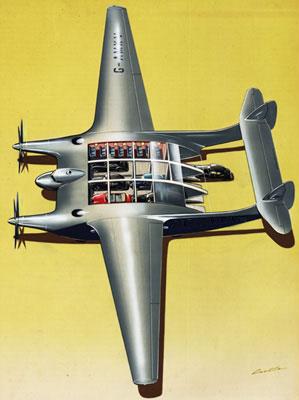Flying Fuselages
Flying fuselages are aeroplanes with wing-shaped fuselages capable of lifting much larger payloads than conventional aeroplanes. The flying fuselage is based on the concept of turning the aircraft's fuselage from dead weight to be lifted by the wings, to an aerofoil contributing to its own lift.
Fuselages that are incorporated into an aerofoil continuous with the main wing, or nearly so, are less materially expensive (although they are more complex to construct), structurally stronger, allow greater carrying space, and are safer overall. More efficient lift produced lower wing loadings, and therefore lower takeoff and landing speeds, in turn increasing safety.
The flying-fuselage structure forms a protective cage around passengers and cargo, offering greater protection in the event of a crash. The potential for weight savings in the main structure opens up options to dedicate more weight to safety, such as seat and locker anchorage.
Most of the larger flying fuselages are built to land in water since there are not a lot of available landing strips on land for large aeroplanes. However, the Scandinavian Realm's Hamsa has an innovative air-cushioned landing gear that allows it to land amphibiously.
Like other aeroplanes, flying-fuseages in IB are relegated mostly to military use. While they may never be able to carry payloads as large as airships, they are still able to carry fairly large payloads at more than twice the speed. It is not surprising that monochronic cultures, like that of the Scandinavian Realm and Germany, use flying-fuselages for civilian applications more than most other cultures of IB, using them as a speedy alternative to Airships.
Recently, the Tysk-Skandinaviske_Rum_Compagnie has built a completely wingless version, the Raumgleiter I, for use as an experimental manned space landing vehicle.
